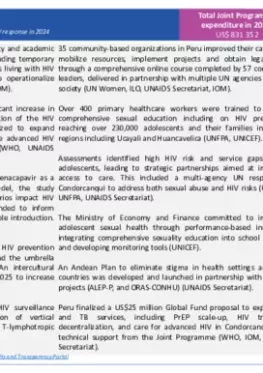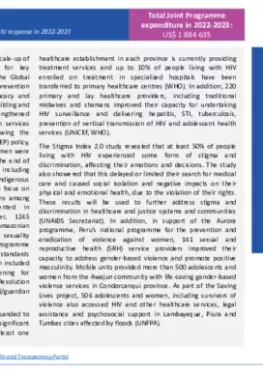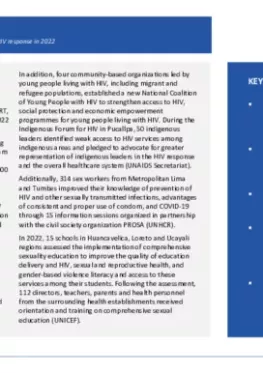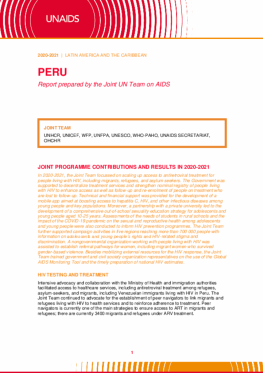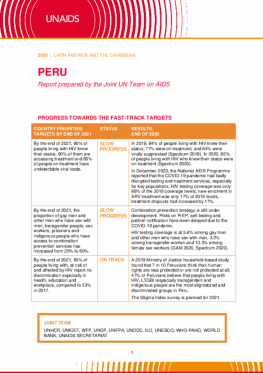|
Peru
After sustained advocacy by UN agencies, civil society and academic partners, Peru’s Congress approved legislation extending temporary health insurance coverage to non-resident foreigners living with HIV or tuberculosis. Support is now being provided to operationalize these new provisions (UNHCR, UNAIDS Secretariat, IOM).
Updated national HIV estimates revealing a significant increase in new infections prompted accelerated implementation of the HIV prevention roadmap. Resources are being mobilized to expand access to pre-exposure prophylaxis (PrEP), improve advanced HIV care and eliminate vertical HIV transmission (WHO, UNAIDS Secretariat).
A cost-efficiency study was launched to evaluate Lenacapavir as a long-acting PrEP solution. Using the GOALS model, the study assesses how different pricing and coverage scenarios impact HIV incidence and mortality rates, with findings intended to inform regional advocacy for the drug's timely and affordable introduction. and accessible (UNAIDS Secretariat).
There has been stronger indigenous leadership in HIV prevention thanks to a formal agreement between UNICEF and the umbrella organization representing Ucayali’s communities. An intercultural methodology for advocacy is ready for roll-out in 2025 to increase investment in Amazonian HIV responses (UNICEF).
Peru also updated its technical regulations on HIV surveillance among key populations and on the elimination of vertical transmission of HIV, syphilis, hepatitis and Human T-lymphotropic virus (WHO).
35 community-based organizations in Peru improved their capacity to fundraise, implement projects and obtain legal status through a comprehensive online course completed by 57 leaders, delivered in partnership with multiple UN agencies and civil society (UN Women, ILO, UNAIDS Secretariat, IOM).
Over 400 primary healthcare workers were trained to provide comprehensive sexual education including on HIV prevention, reaching 200,000 adolescents and their families (UNICEF, UNFPA). Sexual education including in HIV prevention reached 30,000+ adolescents and families in Ucayali and Huancavelica (UNICEF).
Assessments identified high HIV risk and service gaps for adolescents, prompting strategic partnerships to improve access (UNESCO, UNAIDS Secretariat). A UN multi-agency response helps to reduce sexual abuse and HIV risks in Condorcanqui (UNFPA, UNESCO, UNAIDS Secretariat).
An Andean Plan to eliminate stigma in health settings across six countries was developed and launched in partnership with regional projects (ALEP-P and ORAS-CONHU) (UNAIDS Secretariat).
The Ministry of Economy and Finance committed to improving adolescent sexual health through performance-based incentives, integrating comprehensive sexuality education into school budgets, and developing monitoring tools (UNICEF).
Peru finalized a US$25 million Global Fund proposal to expand HIV and TB services, including PrEP scale-up, HIV treatment decentralization, and care for advanced HIV in Condorcanqui, with technical support from the Joint Programme (WHO, IOM, UNAIDS Secretariat).


